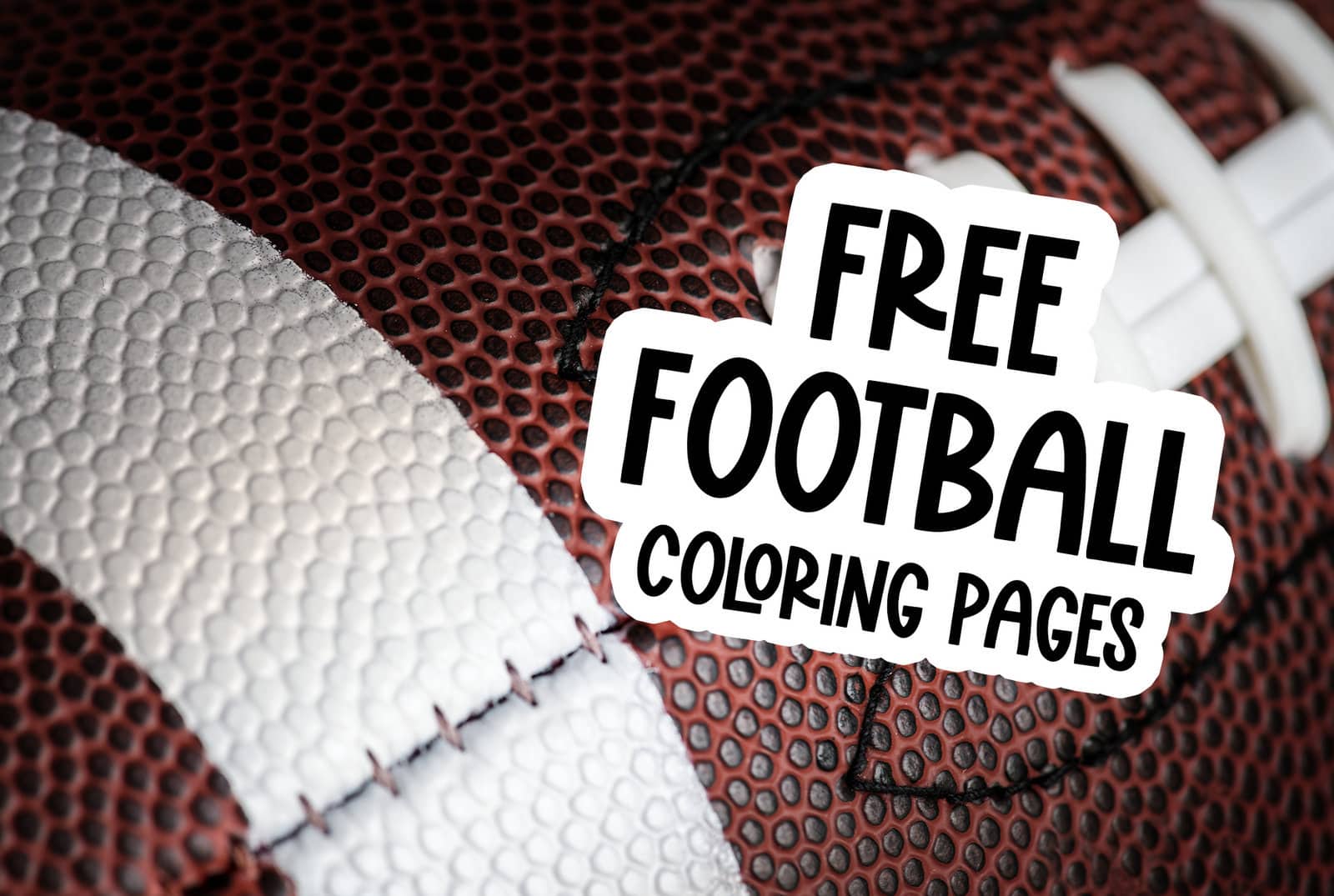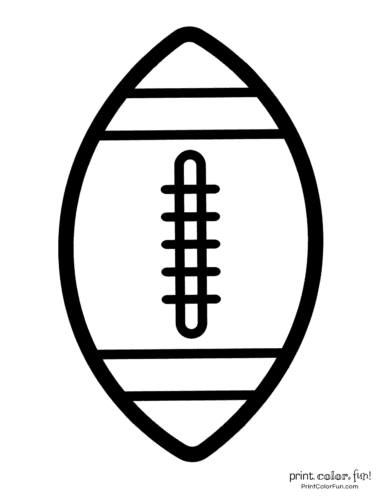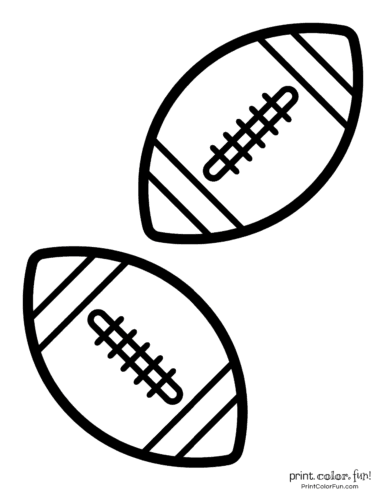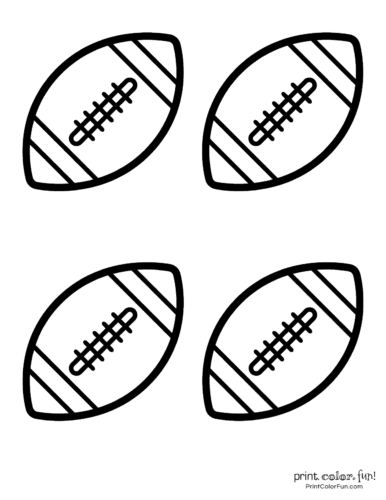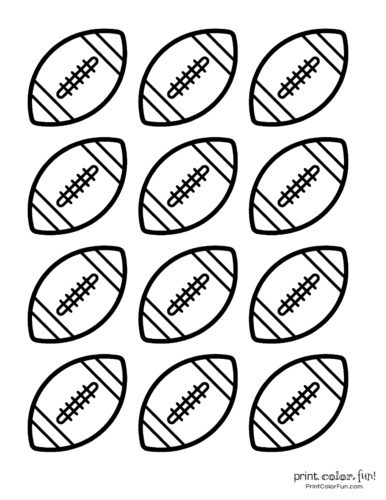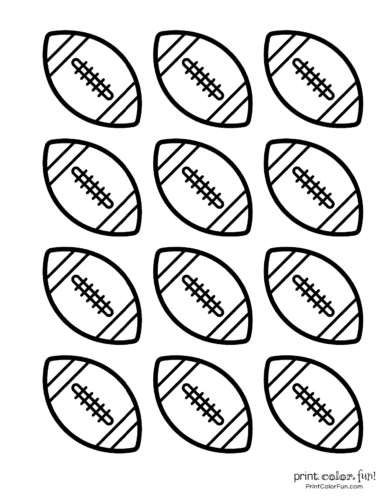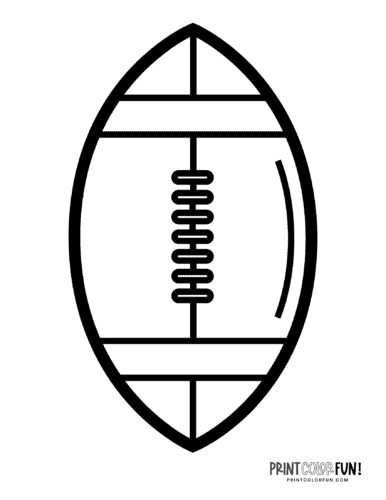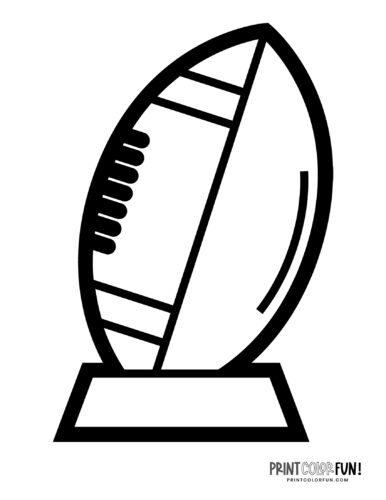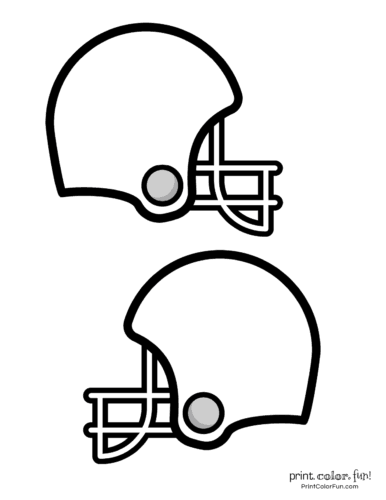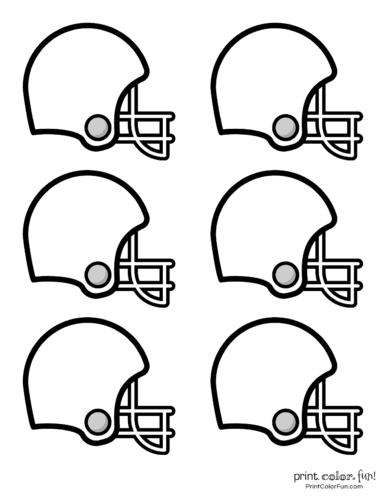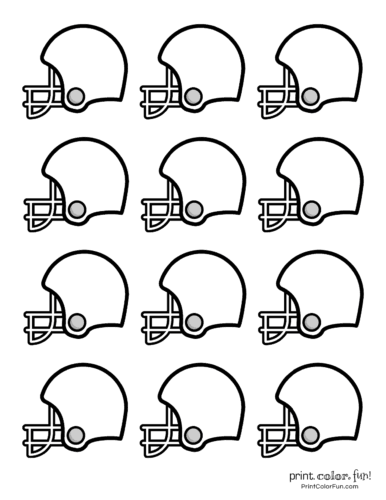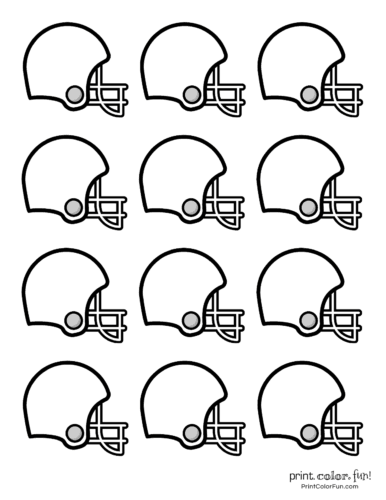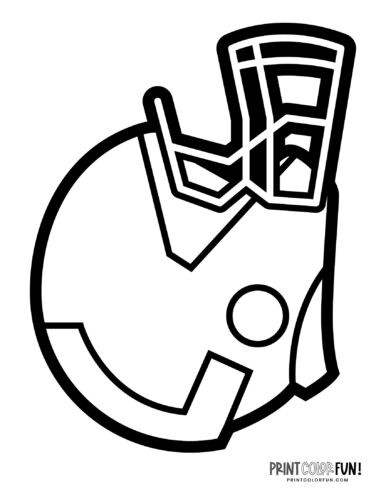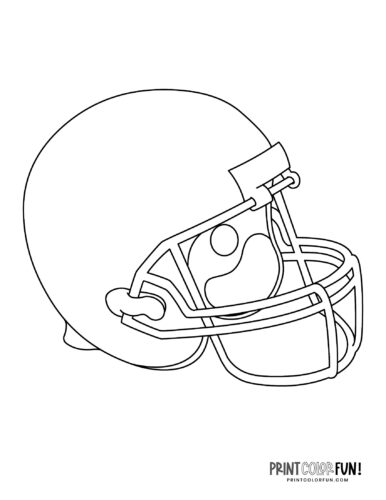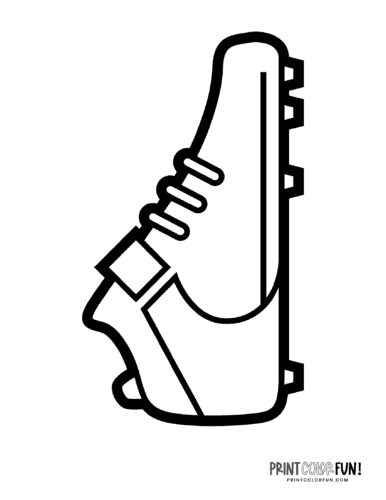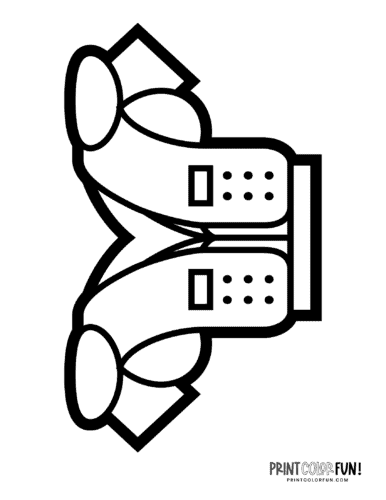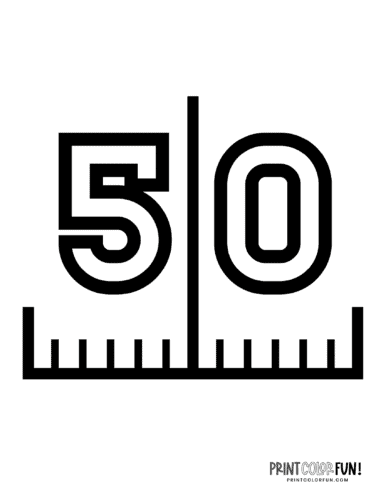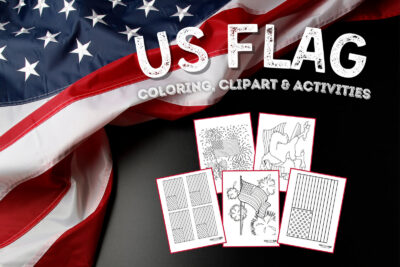Every fall is welcomed by football fans, because it’s the start of football season. Then, each winter, two teams head into football’s finale: The Super Bowl.
Luckily, with these football coloring pages, you don’t need super skills to have some football fun, or to create some bowl-worthy decor.
As a bonus, scroll down to learn more than 40 different football terms and definitions.
For even more colorful fun, take a look at our 14 football player coloring pages!
American football coloring page
2 footballs free printable coloring page

4 small footballs to download
Football cake toppers/small party decorations
COMMON AMERICAN FOOTBALL TERMS & DEFINITIONS
ACTION PASS: Forward pass thrown from an offensive formation stimulating a running play.
AUDIBLE: A change of the original play at the line of scrimmage by the quarterback after he looks over the defense and decides the play called in the huddle won’t work. Also known as check- off or automatic. Audibles are also called by the defense, usually by the middle linebacker.
BLOCKING: A means of protecting the ball carrier by moving defensive men out of his path.
BUTTONHOOK: A pass pattern in which the receiver goes downfield and U-turns back sharply to receive the ball.
CLIPPING: Running or diving into the back of an opponent, or throwing the body across the back of the leg or legs of an opponent other than the ball carrier. A 15- yard penalty.
CRAWLING: An attempt to advance the ball by a player after any part of his person except a hand or foot has touched the ground. A 95-yard penalty.
DOWN: A unit of action in the game that begins with the snap of the ball and ends when an official whistles the ball dead, signifying that the play is over. The offensive team gets four downs in order to advance the ball 10 yards. When 10 yards are gained, a first down is ruled, and the offensive team receives four more downs.
DRAW: Quarterback backpedals as if to pass, but instead hands off for running play to set back who has delayed. Linemen’s initial movements are as if to pass block. When the defense is overloaded against the pass, this can be a big gain call.
DROP KICK: A kick given to the ball as it rebounds after having been dropped from the hands to the ground. Once an art, the drop kick is obsolete. Points after touchdown can still be drop kicked, but the only time you’ll see one tried is by a harried kicker after a busted play.
FAIR CATCH: The opportunity for a player of the receiving team to catch a kicked ball that has crossed the scrimmage line, without being tackled or blocked by an opponent, after signaling his intention by clearly extending one hand above his head and waving it from side to side more than once.
FLAG: Officials’ penalty marker, otherwise known as a handkerchief.
FLANKER: A running back who takes a position to the far left or right of the quarterback to function as a pass receiver. The difference between a flanker and split end is that a flanker will usually line up behind the line of scrimmage, on the opposite side of the field.
Football helmet coloring pages/party decorations
Football helmet cake toppers/small party decorations
FLARE: A quick pass in which the receiver will take a few steps downfield and then take a step or two right or left in anticipation of the quarterback”s throw. Also called a swing or wheel pass. It is not a screen pass.
FLY PATTERN: Pass play on which receiver will run straight down the field, hoping to beat the defensive man — by simply outrunning him.
FORWARD PASS: Live ball thrown toward opponents’ goal to an intended receiver.
FREE KICK: A kick that is required after a safety and may be attempted after a fair catch of a punt. After a safety the team scored upon also must give up the ball, putting it into play with a free kick, a punt, from its own 20-yard line. After any fair catch the receiving team, without interference, is allowed to attempt kicking a field goal.
FRONT FOUR: The defensive line, consisting of two ends and two tackles.
FUMBLE: The loss of possession of the ball by the ball carrier. Fumbles are free balls and can be recovered by either team.
HUDDLE: Two or more players grouped together after the ball is ready for play, usually for receiving instructions from their offensive and defensive quarterback concerning the next play.
KICKOFF: With the ball either resting on a kicking tee or lying flat on the ground, a kick that begins either half or follows a touchdown or field goal. For years college and pro teams kicked off from the kicking team’s 40-yard line, but in 1974 the National Football League changed the spot to the 35-yard line, intending to discourage touchbacks and revive crowd-pleasing runbacks.
LATERAL PASS: An underhanded pass thrown backward or sideways. The difference between a forward pass and a lateral pass is that a dropped or errant lateral is not incomplete, it is in play. A forward lateral, in which the receiver is not behind the thrower, is illegal and will draw a penalty.
LINEBACKER: A defensive player operating immediately behind his line where he can either aid linemen in Stopping a running play or cover an opponent’s receiver if a pass develops.
LINEMAN: A player position on the line of scrimmage. On offense, there must be seven men on the line of scrimmage. On defense, there can be any number. Conversely, a back is a player legally behind the line of the snap.
LOOK-IN PASS: A short pass pattern, usually designed for the tight end, in which he will run diagonally for a few yards toward the center of the field, then look up for the quick throw. Timing between the quarterback and receiver makes this play go.
NEUTRAL ZONE: The space between the scrimmage lines of the offense and defense, about 11 inches or the length of the football.
ONSIDE KICK: A kickoff in which the ball is placed flat on its side. The purpose is to make the return hard to handle and perhaps make the receiving team fumble. The disadvantage is that the kick will not travel as far or as high as the end-over-end type. On a kickoff the ball must travel 10 yards from the spot it is kicked, making it a free ball.
PLACE KICK: The technique most often employed to kick off and on-field goal and try-for-point attempts. The ball, which may be held in position by any player of the kicking team, is kicked from a fixed position either on the ground or on a toe.
PULLING GUARD: Guard who pulls out behind scrimmage line for a trap block or to lead sweep blocking for ball carrier.
PUNT: A scrimmage kick that the offensive team will use either when it is deep in its own territory with no prospects of a first down or when it wants to put the opposing team at a disadvantage deep in its territory. Punts are usually fourth-down plays. A punt is kicked out of the hands or after a short drop, but the ball must not touch the ground.
REVERSE: A running play on which the lead blockers go in one direction, while ball carrier goes in the opposite direction. A big gainer if things go right; suicide for the runner if the defense catches on.
ROLL OUT: A play in which the quarterback runs laterally to either side of the line of scrimmage, waiting for an option to pass or run the ball himself.
SCREEN PASS: A deceptive pass intended to fool the defense into thinking a deep pass is developing, while the blockers let linemen penetrate deep into the backfield. Meanwhile, a wall of blockers form for a back, who takes a lob pass from the quarterback with the hope of penetrating a vulnerable defense.
SCRIMMAGE: A play that begins with a snap from the center.
Football coloring pages: Equipment and gear
SCRIMMAGE LINE: The yard line (marked or unmarked) that passes through the point of the ball nearest a team’s own goal line.
SEAM: The imaginary line where two zone-defense coverage areas meet. The passer attempts to take advantage of hitting the “seam.”
SHIFT: A change in position by either the offensive or defensive players after the teams have reached the line of scrimmage. The offensive team is required to reach a set position one second after any shift.
SNAP: A quick, continuous motion by which the ball is handed or snapped back by the center.
TACKLING: Grasping or encircling an opponent with hands or arms.
TIGHT END: Offensive end who lines up in close formation (as opposed to split end’s wide set) where he can either block for a ball carrier or be employed as a pass receiver. Lines up next to the tackle on either side.
TURNOVER: A loss of possession because of fumble or interception.
WIDE RECEIVER: A split end or flanker back. Either or both are set wide of scrimmage line as potential pass receivers.
WISHBONE: A offensive formation requiring a versatile quarterback. The quarterback has four options — to hand off, toss laterally to another back, keep and run, or pass. The main drawback to the wishbone is that plays take longer to develop and long passes are limited because with a tight end there is only one wide receiver.
These football terms and definitions were excerpted from material published in the Quad-City Times (Davenport, Iowa) on September 11, 1977
ALSO SEE: 14 football player coloring pages

